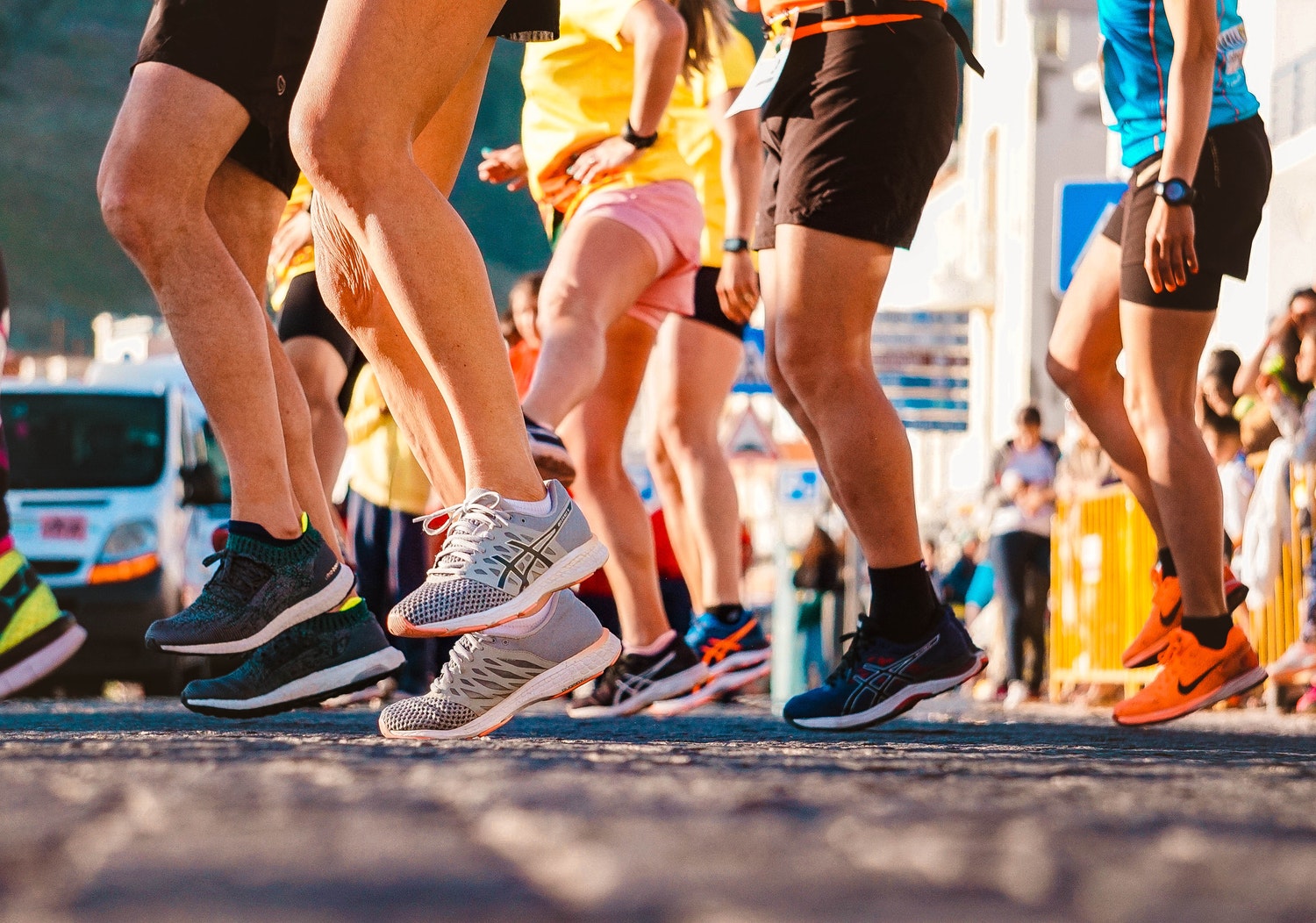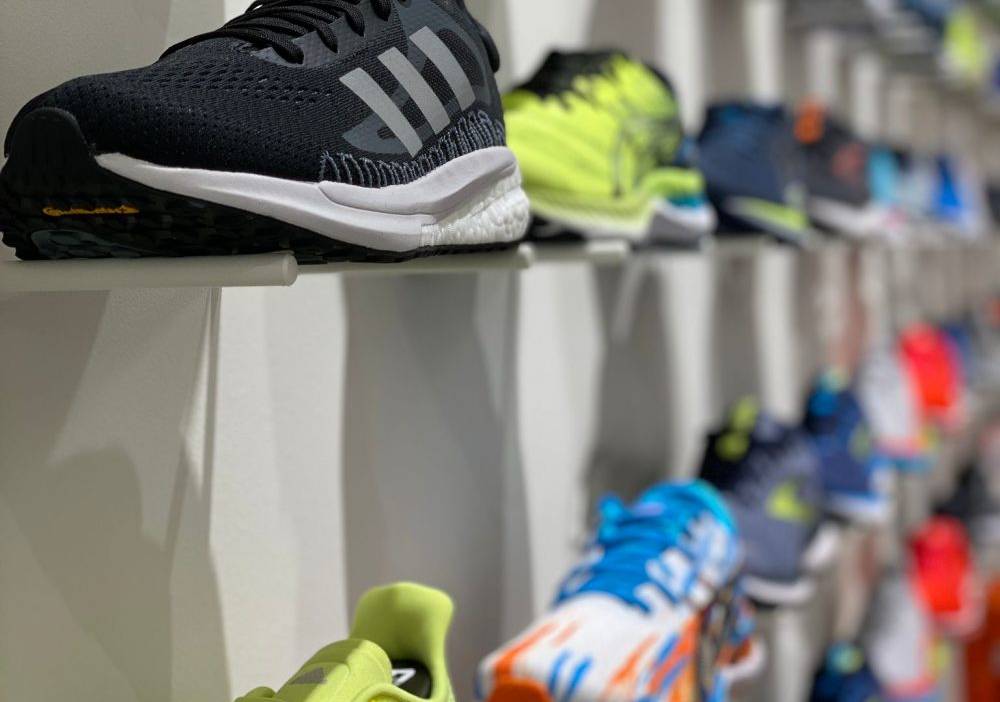Buying a pair of running shoes today is one of the hardest things in the world. Just enter a specialized store and look at the exhibitor: dozens of brands, with dozens of models, with dozens of technologies that wink at you and say “buy me buy me“. It is the power of marketing, which for at least 50 years has been trying in every way to convince you that that model, the latest model with the latest technology, is absolutely the best money can buy. We say 50 years because there is a precise date and a precise model with which all this started: he 1972 con the Nike Cortez. Before that date and that model, running shoes were basically a rubber sole with a fabric upper. Neither more nor than how basketball shoes used to be Converse All Star and volleyball shoes were what sneakers are today Onitsuka Tiger. Then the Nike Cortez arrived, those of Forrest Gump to understand each other, the first running shoes with a cushioned sole. They were the first comfortable running shoes and it was the invention of the idea of cushioning, or foot protection. For those who weren’t there, just look around at all the sneakers sold today as retrorunning to understand that, at the beginning of the seventies, it was a real revolution.
The invention of protection in running shoes
The marketing idea was very powerful: of running shoes that reduce injuries, cushioning impact stress with the high sole and Achilles tendon stress with the drop. That is, the heel a little higher than the toe. It was a resounding success, followed by virtually all brands that abandoned the thin strip of rubber for the “soft rubber sole”. Actually the EVA midsole had appearedbut at that time it was called a high rubber sole.
The idea of protecting the feet and not only of runners with technologically specific running shoes was a very powerful marketing lever, and many biomechanics set about studying whether it was actually true.
Alan Nakkash, CC BY-SA 2.0via Wikimedia Commons
For example Peter Cavanaugh con il suo The Running Shoe Book which in 1980 made the checklist of the 23 characteristics that a running shoe must have to be really “protective”. At the time it was the bible for buying running shoes.
The appearance of the idea of pronation of the foot
In the meantime though another idea had appeared, that of pronation of the foot. That is, the inward rotation of the foot at the moment of support to which the causes of almost all the injuries caused by the practice of running were attributed. It was the beginning of the eighties and the most attentive runners tested foot support and plantar arch leaving the wet footprint on the floor or sand of the beach. Marketing had now divided the population of runners into 3: the neutral ones, the pronators and the hyperpronators. And the rigid plastic material structures inside the EVA midsole had also appeared they promised to correct pronation and overpronation controlling the movement of the foot and thus reducing injuries.
For about 20 years, until the beginning of the 2000s, the marketing battle was therefore played between cushioning and stability, or correction, with models that have now become legendary such as the Asics Gel Kayano now in its 28th version, the Mizuno Wave Rider now in its 25^ or the Nike Ais Pegaus which reached 39^.
But while marketing fought this battle, scientists verified its assumptions, and the veil was lifted at the beginning of the new millennium when by now numerous studies had shown that there was no correlation between the appearance of these shoe styles and injury rates among runners.
Running is a natural movement
Era (re)appearance of the idea that running is a natural movement, absolutely natural, and needs neither correction nor cushioning, neither stability nor protection. The natural running movement was emerging, which found its theological summa in the 2009 book Born to Run by Christopher McDougall. Apart from those who improvised new Abebe Bikila and started running barefoot or nearly so, for a few years the trend was to minimize the height of the midsole and eliminate the drop to favor the natural movement of the foot. Those were the same years of the debate between heel or toe strike, running with the roll of the foot or the forefoot, and things did not improve from the point of view of injuries so much so that the movement of minimal running remained a niche market. The vast majority of runners continued to buy cushioning or stable shoes like the Brooks Adrenaline now in its 22nd edition.
Break the mold
Meanwhile, however, with natural or minimal running, the thirty-year dichotomous paradigm between cushioning and stability had been broken and new brands, with new models and new technologies or solutions were appearing on the horizon. It is the period in which, for example, the Disappointedwith their maxi soles, and the Other, with the widetoe solution at the toe, no drop but cushioning like the Topo Athletic. The debate between high or low sole in running shoes had appeared. But above all it is the period in which to buy the Adidas Boost, which promised something other than protection, stability and reduction of injuries: promised to make you go faster. The behavior of the Boost midsole was and is such as not to dissipate the impact forces on the ground of the foot but rather to return them as a surplus of energy capable of making anyone run faster.
From energizing running shoes to super plate shoes
Energizing running shoes were born, and whether truth or suggestion, it didn’t seem true to runners that they finally had the realization of their dream on their feet: a pair of shoes that made them go faster. Within a couple of collections practically every brand had its own technology that would guarantee an energy return, to lower one’s times, to reduce fatigue and to make one run longer and faster. Even brands that had linked their name to protection (like Asics with gel) or stability (like Brooks) introduced shoes without gel, or without motion control, in favor of push and energy return.

But the story wasn’t over, and the new marketing frontier had become the attempt to break down one of the last symbolic walls of sport: running a marathon, or the distance of a marathon, in less than 2 hours.
Nike tried it on the Monza circuit with Eliud Kipchoge. But above all, he tried it with a pair of running shoes which were then marketed as VaporFly 4% with the promise of improving running economy by just 4%. Promise kept, as verified by numerous scientific studies stimulated by that precise and iconic number.
Carbon plate running shoes, or “heeled” as some say, had appeared, and when Kipchoge actually ran the marathon distance in less than 2 hours and then set an incredible race record. the embankment was broken: practically every brand of running shoes launched into the carbon plate race which was the guarantee of running even faster, even longer, with even less effort.
Comfortable running shoes are the best money can buy
Here, today when we enter a running shoe store we find ourselves faced with the sedimentation of all this history. Shock absorbing models, stabilizing models, energizing models, natural models, models with maxi sole, with wide toe, with drop and without drop, with midsole that returns energy and with carbon plate. And the question we ask ourselves is very simple: What’s the best pair of running shoes I can buy?
The answer is much simpler than you think: comfortable running shoes are the best money can buy. Comfortable in the sense of the 2015 study by Benno Nigg (Running shoes and running injuries: mythbusting and a proposal for two new paradigms: ‘preferred movement path’ and ‘comfort filter’), one of the world‘s leading experts in biomechanics and professor at the University of Calgary: not comfortable because they fit well but comfortable because they let the foot rest where it should rest and how it should rest according to their unique and unique individual characteristics, they roll the way they should roll, let you feel the connection to the ground in the most natural and fluid way for you and they interact with you by doing one simple and crucial thing: they make your ride enjoyable.
Advertising
